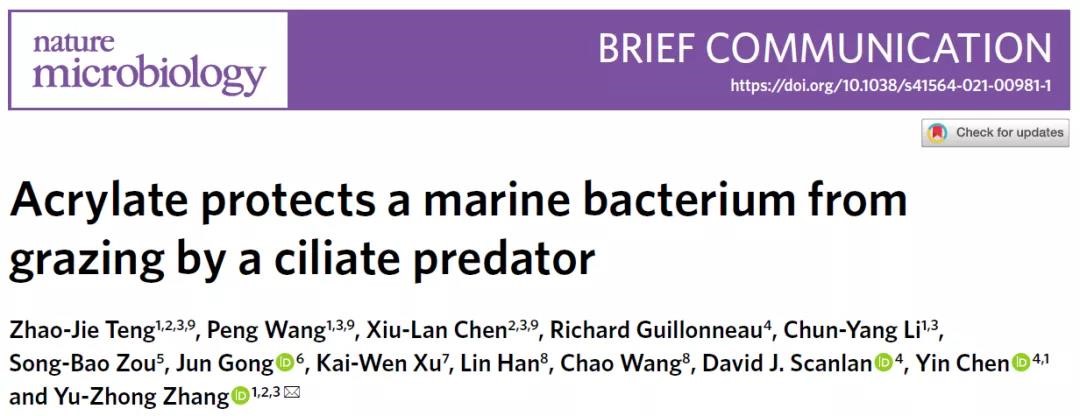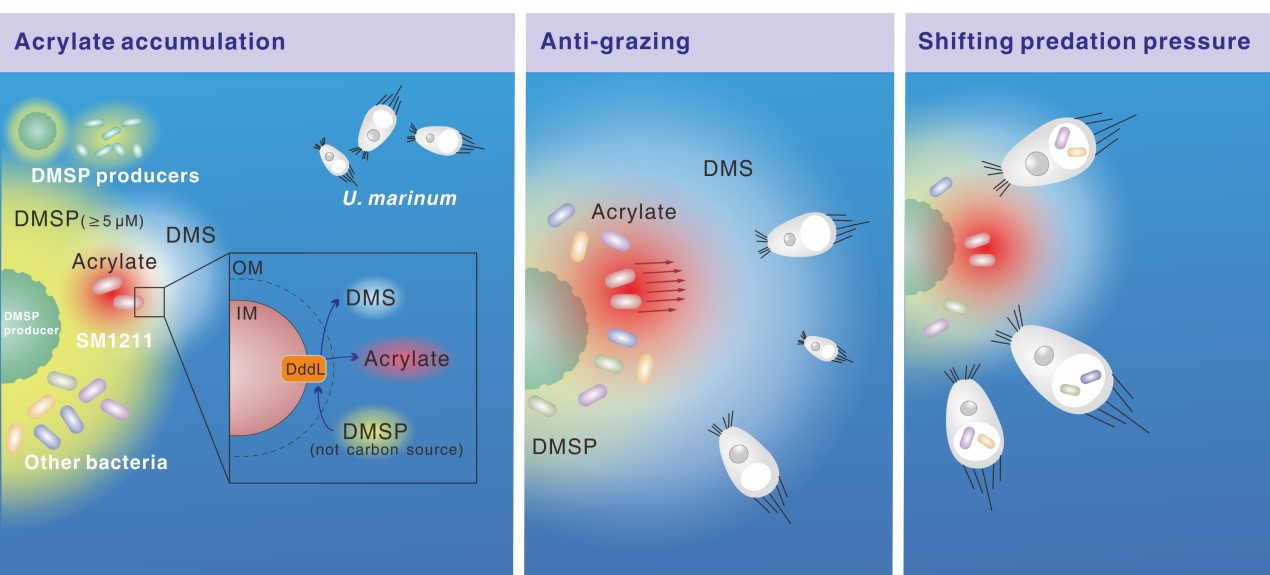On October 25, professor Zhang Yuzhong’s team from the State Key Laboratory of Microbial Technology of Shandong University, in cooperation with Ocean University of China and other institutions, published an online paper titled "Acrylate protects a marine bacterium from grazing by a ciliate predator" in Nature Microbiology, a well-known international microbiology journal. Doctoral student Teng Zhaojie, associate professor Wang Peng, and professor Chen Xiulan are the co-first authors, Professor Zhang Yuzhong is the corresponding author, and Shandong University is the first author’s institution and the corresponding author’s institution.

The predation and defense between predator and prey is one of the important interactions in the field of microorganisms. The chemical defense mechanism that bacteria produce biologically toxic substances to resist predation is widely present in the marine system. Dimethylsulphoniopropionate (DMSP) is one of the most abundant organic sulfur compounds in marine ecosystems. In addition to participating in the global sulfur cycle and climate regulation, DMSP also performs many important physiological and ecological functions. Previous studies have shown that when the alga is preyed, the ruptured algal cells produce high concentrations of toxic acrylic acid through the lysis of released DMSP, which can resist further predation by algae-eating zooplankton. However, it is still unclear whether there is a similar defense mechanism in bacteria.
In this study, the marine bacterium Puniceibacterium antarcticum SM1211 which contains the DMSP lyase DddL gene in its genome was selected as the main research strain. On the basis of revealing the accumulation mechanism of the extracellular acrylic acid of the bacteria, the marine ciliate Uronema marinum and the strain SM1211 were used as prey and predator, respectively. Through predation experiments, it is found that in the presence of DMSP, strain SM1211 can produce acrylic acid by lysing DMSP, reducing the short-term predation efficiency and long-term growth rate ofUronema marinum, and at the same time, it can also affect the predation ofUronema marinum. The selectivity makes the predation pressure transfer to the bacteria that do not contain the dddL gene in the bacterial community, thereby improving the survival rate of strain SM1211 during the predation process, adjusting the composition of the bacterial community and the energy flow between different nutrient levels.

Accumulated acrylate protects Puniceibacterium antarcticum SM1211 from protozoan predation
The research team led by professor Zhang Yuzhong has been engaged in marine microbiology and microbial oceanography for a long time. In recent years, they have achieved a series of research results in the field of carbon, nitrogen, and sulfur cycles driven by marine microorganisms. The work published in Nature Microbiology this time is another research progress the team has made.
The work was completed by relevant scholars from Shandong University, Ocean University of China, Pilot National Laboratory for Marine Science and Technology, and the University of Warwick. The research work was supported by the National Key Research and Development Program of China, the National Science Foundation of China, the Fundamental Research Funds for the Central Universities, Major Scientific and Technological Innovation Project (MSTIP) of Shandong Province and the Program of Shandong for Taishan.
Article link: https://doi.org/10.1038/s41564-021-00981-1
